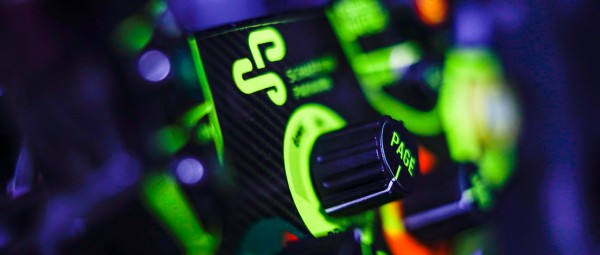New technology on the starting grid: Drive-by-Wire
Fast and furious: Not only is the racing action in motorsport fast and furious. The speed of the technological development behind the scenes of the racing series is also fast and furious. This currently applies particularly to the DTM. Because in addition to the preparations for the electrification of the racing series, Schaeffler is also bringing another new technology to the starting gird in 2021: The Space Drive steer-by-wire system from Schaeffler. But one thing was clear even before Space Drive was used in the DTM for the first time: Space Drive is a technology that demonstrates new possibilities and will not just cause a stir on the racetrack.
Technological focus on DTM
The DTM is currently one of the most exciting racing series. The change to the GT3 regulations in 2021 has persuaded many new manufacturers and drivers to join the DTM starting grid. The DTM series also shows that events on the racetrack also reflect the technological transformation, which is currently keeping the automotive industry busy worldwide. While Schaeffler has already presented the DTM Electric car, which will make an all-electric DTM series possible within the foreseeable future, a wide range of further technological advances are currently finding their way onto the racetrack.
The Space Drive steer-by-wire system is an example of this kind of development. It is part of the comprehensive drive-by-wire system from Schaeffler, which sees the brakes, transmission and steering all controlled electronically, instead of mechanically as was previously the case. Space Drive has been tested on the motorsport scene for two years. Its benefits play out in race cars, while the system also has huge potential for everyday transport in the future.

Steer-by-wire: Steering without a steering column in sight

The idea of a steer-by-wire system initially seems almost foolhardy: The system completely eliminates the steering column and the mechanical connection between the steering wheel and the steering gear. Mechanical and hydraulic components are replaced by electrical and mechatronic parts.
A sensor on the vehicle’s steering wheel senses each rotary movement. An electric motor on the steering gear generates forces that are transmitted to the tie rods. Another electric motor on the steering wheel finally simulates the feedback that is familiar to the driver from conventional steering systems
Such a system has a wide range of benefits: The steering system can be adapted to suit the preferences of the driver electronically. The driver can select various setups and steering ratios ranging from comfortable to sporty. In addition, a steer-by-wire steering system can also perform some correction and auxiliary functions if it is connected with other assistance systems.
Space Drive: Invented for vehicles adapted for disabled people – the perfect solution for motorsport
The Space Drive technology has its origins in vehicles that were adapted for disability access. Control devices such as the joystick or mini steering wheel transmit steering commands by means of electrical impulses. Due to this new type of steering system, it is ultimately possible to eliminate the steering column completely. The individual adjustment of the steering torque even allows safe driving in the case of low residual strength or restricted motor skills, for example.
In motorsport, it is an important advantage that a steering wheel with steer-by-wire technology is easier to handle and therefore enables more precise steering. On public roads, the system has already completed more than one billion test kilometers without a single accident – and it has also proven itself on the racetrack.
Successful on the racetrack from the very beginning
On June 22, 2019, the system celebrated its racing debut in the 24-hour race on the Nürburgring “Nordschleife” in a concept vehicle with Rahel Frey at the wheel. This debut has been followed by numerous other promising appearances in motorsport to date.
In the 2020 GTC race season, which was held as part of the DTM, the concept vehicles with steer-by-wire technology drove to 17 podium places, of which nine were wins in nine races. In the ADMV Lausitz Rallye 2020, the Ford Fiesta 5R “test mule” that started out of competition with Armin Schwarz at the electronic wheel was able to maintain the same level as the top teams on all twelve special stages. At the classic 24-hour race on the Nürburgring, the Porsche Cayman 718 GT4 equipped with the steer-by-wire system by Schaeffler finished second in the SP7 class and 29th overall in 2020.


